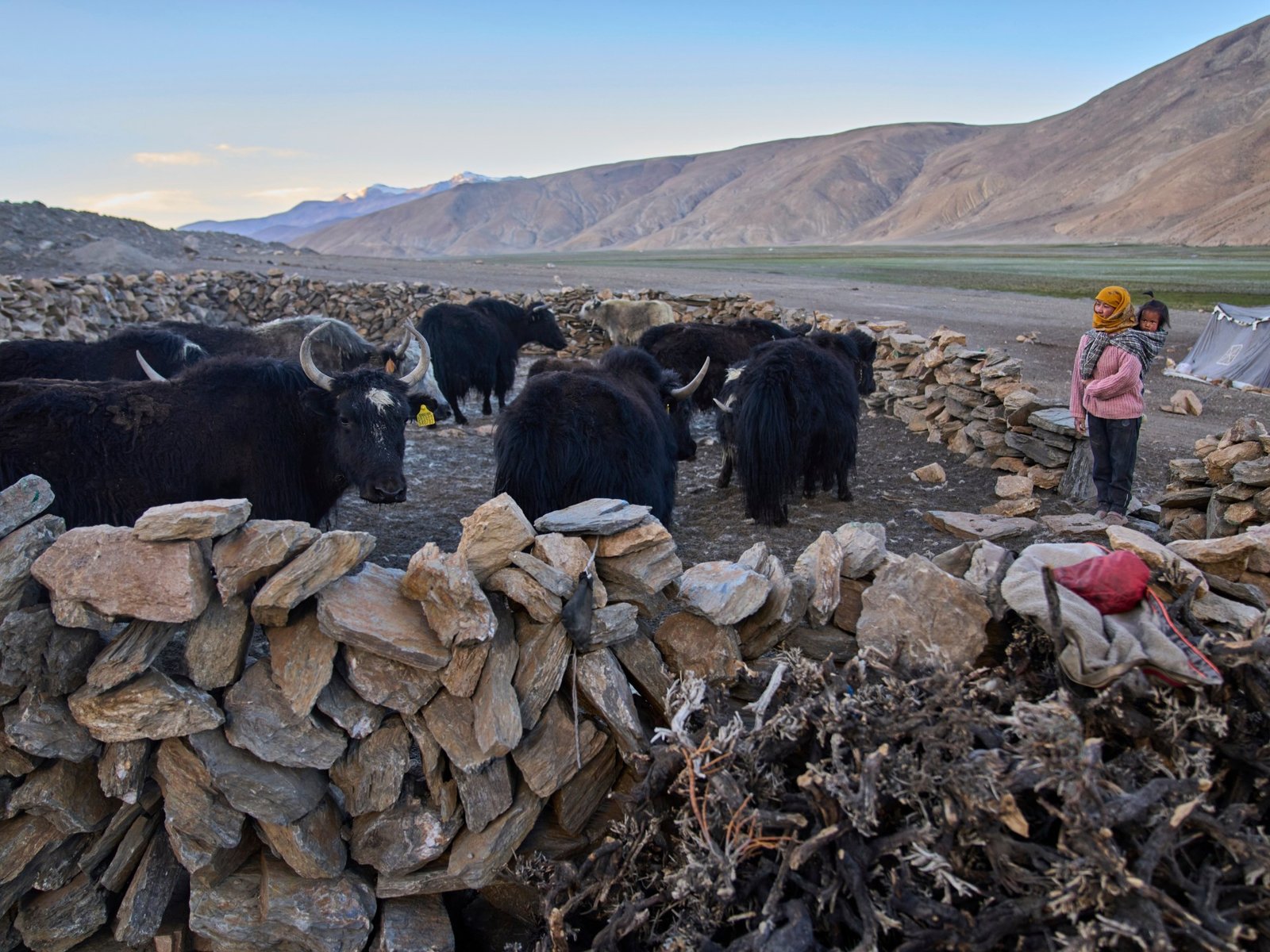Here’s a rephrased version incorporating context and keywords relevant to the situation in Ladakh, India, in 2025:
—
As dusk casts a serene glow over the rugged mountains of Ladakh, India, Tsering Dolma, a dedicated mother with her one-year-old son secured on her back, expertly leads a group of twelve yaks into a stone-walled corral. This high-altitude region, known for its stark beauty and cultural heritage linked to the ancient Silk Route, remains sparsely populated, with few fellow herders tending their livestock across the expansive, wind-swept plains that merge grasslands into rocky foothills.
For generations, families like Dolma’s have relied on the seasonal snowmelt to sustain the green pastures vital for their yaks. However, a troubling trend has emerged: herders are witnessing erratic weather patterns that jeopardize the availability of grasslands essential for their livestock. “In the past, we experienced consistent snow and rainfall, but now those patterns have drastically changed,” the 32-year-old laments. “Even the winters are noticeably warmer than they used to be.”
In this traditional lifestyle, women play a crucial role in herding, milking, and gathering wool, tasks that remain predominantly manual. In a nearby valley, 73-year-old Kunzias Dolma brews yak milk tea while skillfully spinning her Buddhist prayer wheel, a symbol of her deep-rooted spirituality and commitment to her heritage. Having dedicated her life to yak husbandry, she spends countless hours producing dairy goods and crafting warm blankets from their wool. “Our daily routine starts at 5 AM,” she shares. “My husband and I dedicate ourselves to milking the yaks and managing other tasks until lunchtime, and after a short break, we resume our work until evening. This has been our legacy.”
Yet today, this traditional way of life faces mounting challenges. Increasingly inhospitable conditions due to climate change threaten both the health of the yaks and the generations of knowledge passed down through families. Rising temperatures and unpredictable rainfall have resulted in a scarcity of nutritious vegetation, placing additional stress on these hardy animals. Research indicates that Ladakh’s average temperature has surged by 3 degrees Celsius (5.4 degrees Fahrenheit) over the past four decades, leading to more extreme heatwaves and erratic precipitation.
While understanding the precise impacts of climate change on yak populations is complex, scientists suggest that these fluctuations are a significant factor in their decline. Government statistics reveal a dramatic drop in Ladakh’s yak population, plummeting from nearly 34,000 in 2012 to below 20,000 by 2019—the latest available data. Although millions of yaks continue to thrive worldwide, experts warn that the unique Himalayan ecosystem is particularly susceptible to the effects of global warming, raising concerns for the future of herding communities in this remote region.
—
This version emphasizes the context and ongoing issues faced by the community while maintaining the essence of the original narrative.

